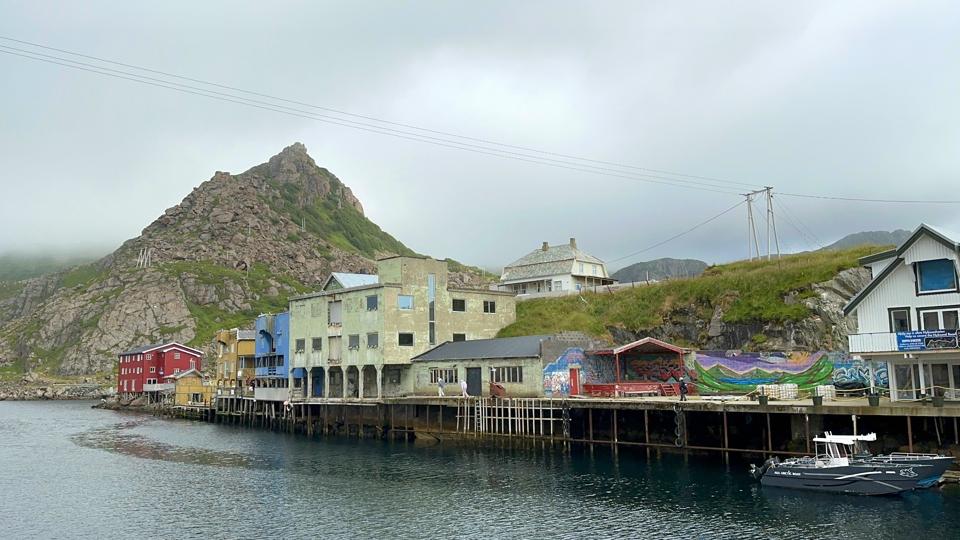As you wind your way along the narrow coastal road of Langøya island in Northern Norway’s Vesterålen archipelago, you wonder how anyone could possibly live here.
With a drop into the ocean on one side and a sheer rocky mountain on the other, you hope you don’t meet a car coming the other way. Then a cluster of buildings comes into view and everything makes sense.
Welcome to Nyksund, a tiny fishing village that’s been abandoned three times in its history. It’s now getting yet another chance for a new life thanks to an unlikely source: troubled youths from Berlin, Germany.
A thriving fishing community—for a while
It’s no surprise that somewhere almost completely surrounded by open ocean should have a strong history with the water. The first written records of settlement in Nyksund come from 1601, but it’s believed people have lived here far longer.
The reason? Norway’s Vesterålen islands are close to the edge of the Norwegian Continental Shelf, and that means deep water prime for fishing.
Despite the challenges of living in a remote, exposed part of Northern Norway, Nyksund attracted keen fishermen, at one point being home to an astonishing population of 800 people.
In 1934, a fire devastated the wooden structures of Nyksund. Some of the buildings were rebuilt in stone, a relatively rare material for a small Norwegian coastal village. Perhaps this is the key to the village’s ongoing survival.
Nyksund’s final abandonment
As fishing technology improved and vessels became bigger, Nyksund’s small harbor fell out of use. In the 1970s, the Norwegian government implemented a forced relocation from Nyksund, financially supporting people to move to nearby towns including Myre, just 7 miles away but now a thriving fish processing center.
As the village was abandoned for the third time, all hope seemed lost for Nyksund. But then in the mid-1980s, a group of young German students discovered Nyksund by accident on a road trip around Vesterålen. They saw potential in the village that no one else did.
The resurrection for art and tourism
Soon, the group had started a social project to bring struggling youths from Berlin over to Nyksund to renovate the buildings. Vesterålen locals, who were at first unsure of the project, soon took to the idea, and more people joined in to renovate houses, start businesses and revive Nyksund.
Today, Nyksund is home to approximately 25 permanent residents and functions as a tourist destination. There are places to stay, a couple of restaurants, cafes, and a second-hand store.
Several artists and photographers have moved in and set up art galleries, while the village population hosts various events and concerts through the summer.
Nyksund is also a good base for keen hikers. It’s located at one end of the famous Dronningruta, the Queen’s Trail, named after Norway’s Queen Sonja who is especially fond of the area.

